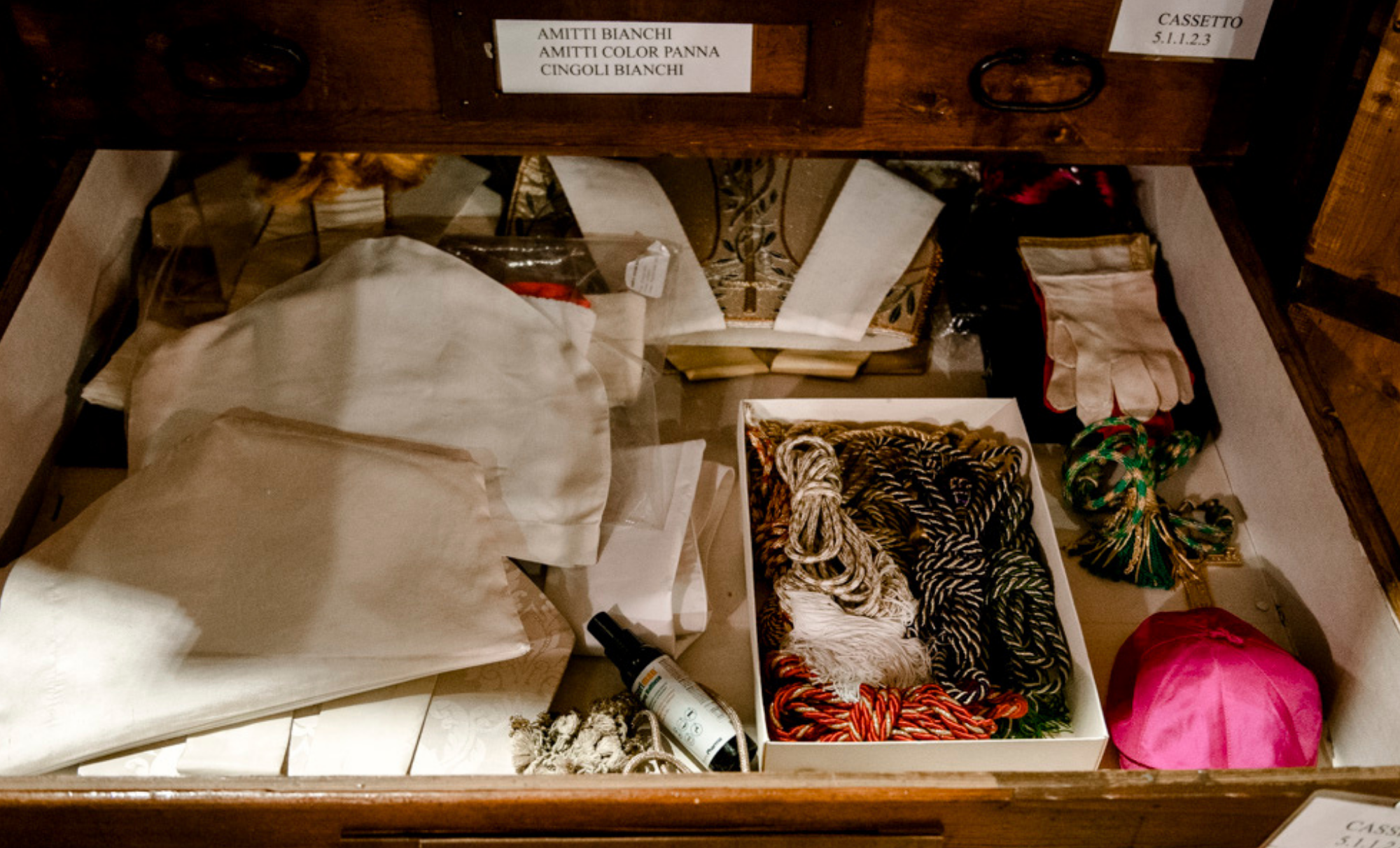Every liturgical celebration rests on a network of signs that often escape notice. Among them are the vestments: fabrics that gather days of work, silent hands, prayers as subtle as threads. Their discretion allows the liturgy to speak without forcing, leaving room for what truly matters: the presence of the Mystery, offered through the humble path of symbol.
There are realities that remain invisible unless someone stops to contemplate them. The world of liturgical vestments is one of these: not merely a collection of fabrics, but an ancient language the Church guards because it knows that human beings, in order not to lose what is essential, need signs. Not to “decorate,” but to remember that what happens upon the altar does not belong to the ordinary order of things.
History confirms this: vestments did not originate as religious costumes. They were civil garments of ancient Rome, later adopted by the Church when worship moved from private homes to dedicated places of celebration. Over time, they were shaped by liturgical gestures, as though the fabric had learned to bend to the movement of grace. Scholars have traced this development: every cut, every color, every variation carries a meaning rooted in the history of faith. The vestment does not follow the logic of aesthetics for its own sake. It is a sign that points beyond, a reminder of a responsibility: whoever wears it does not act in his own name. It is not the person of the priest that is emphasized, but the Church he represents. Here comes into play what Fr. Uwe Michael Lang calls a “language of sobriety,” a way of speaking without shouting: the form, the color, the weight of the fabric orient the believer’s heart toward the Other without unnecessary distractions.

Behind these signs are hands that remain unseen. The hands of nuns who, in silent workshops, prepare what the liturgy will use to return grace to the world. Their work is not a craft, but a form of prayer.
And it is striking to know that many vestments used in our communities are born in convents that live almost hidden. Benedictines, Visitandines, Poor Clares: women who throughout history have spent hours sewing, restoring, embroidering filigrees that no one will ever attribute to them. Their work is a Christian paradox: invisible and yet essential. They seek no recognition and, precisely for this reason, reveal a spiritual freedom that today we struggle to understand.
A question arises: is all this really necessary? Would a simple garment not be enough? It is a legitimate question. But perhaps it reveals another difficulty: do we still have eyes capable of reading the signs? Fr. Lang recalls—following Ratzinger—that the liturgy does not use perceptible forms to add something, but because without forms and colors, the human being risks losing the sense of the Mystery. Beauty, when it is authentic, is pedagogy. This is why the vestment is not an “extra”: it is a “for.” For reminding us that what happens in the Eucharist does not arise from personal whim, but from an order that precedes everyone. For helping us sense that grace deserves the best of our work. For preserving the simple truth that what is done for God cannot be improvised.

The religious women who embroider these fabrics do not preside over the Eucharist, yet they make it possible. They are the discreet presence of a Church that also lives in hiddenness: they prepare what others will offer before the People of God. Their silent fidelity belongs to the rite as much as the chasuble they hand to the priest, that same vestment with which he will enter the Mystery and bring back to earth the divine Sacrifice. In this weaving of threads, of time, and of silence, beauty becomes a threshold through which grace may pass.
In the end, liturgical vestments are not ornamentation, but a slow pedagogy. They remind us that faith also passes through what appears, and that beauty—when it is not aesthetic ostentation—becomes a place of revelation. In these ancient fabrics, renewed each day by hands that pray while working, the Church’s memory and the faithful’s hope are interwoven: a fabric that does not wear out, because it continues to speak even when the world has stopped listening.
s.E.C.
Silere non possum